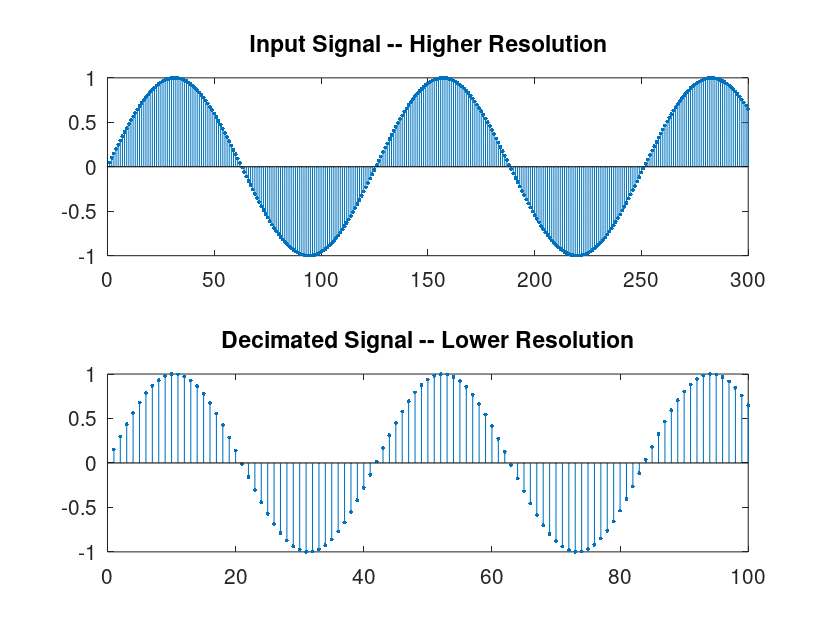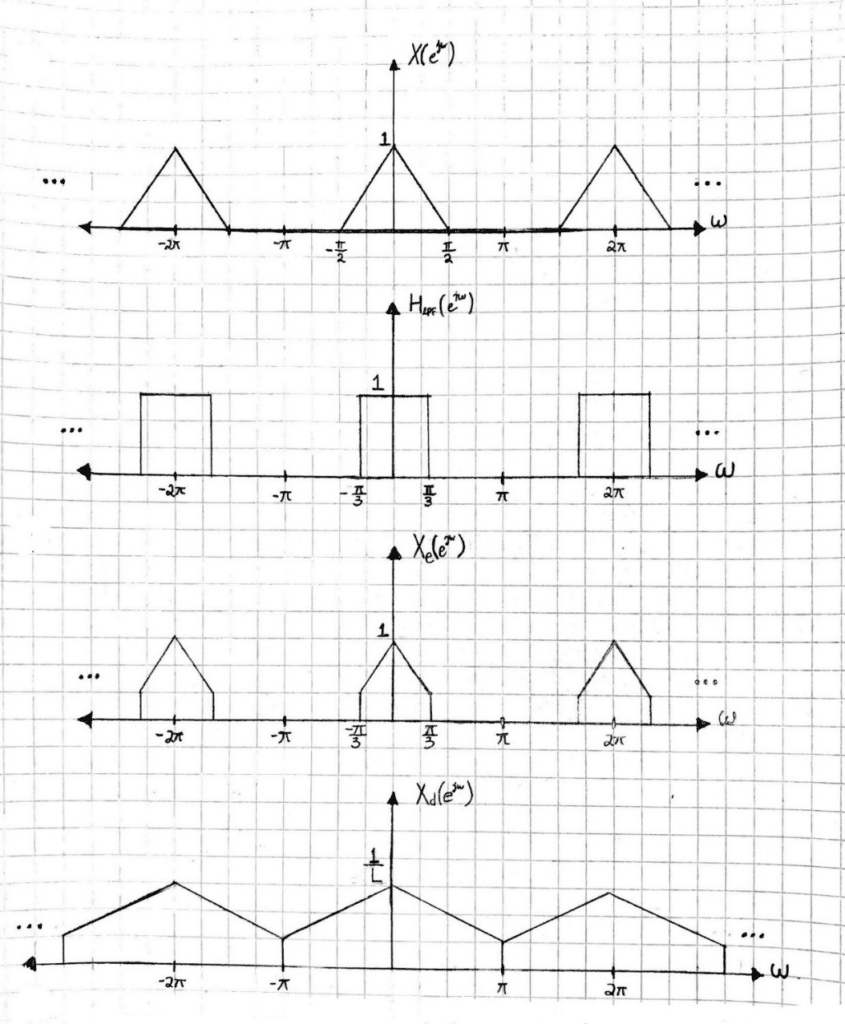Multirate systems are systems which process signals at multiple different sampling rates within the system. Multirate systems are useful for passing signals between systems which have incompatible sampling rates. Additionally, using multirate DSP techniques can help to decrease computational cost when processing a discrete signal.
Decimation is a fundamental concept when working with multirate systems. Decimation in discrete time is simply the process of reducing the resolution of a signal, i.e., the rate at which the signal was sampled. Discrete-time decimation can be modeled by the system below:
Figure 1: Decimation Block Diagram
The downsampling operation can be mathematically represented in the D.T. frequency domain as the following:
The downsampling of the signal results in an output signal which is identical in form but lower in resolution.
Figure 2: Decimation in the D.T. Domain
To prevent aliasing, the input signal x[n] is first convolved with the impulse response of a lowpass filter with a cutoff frequency equal to . A lowpass filter used in this context is also known as an anti-aliasing filter. After passing the signal through the ideal lowpass filter, a downsampling operation may be performed to obtain the signal
. The discrete-time decimation may be visualized in the frequency domain in Figure 3. The decimation is performed with a downsampling factor of L = 3.
Figure 3: Decimation in the D.T. Frequency Domain


